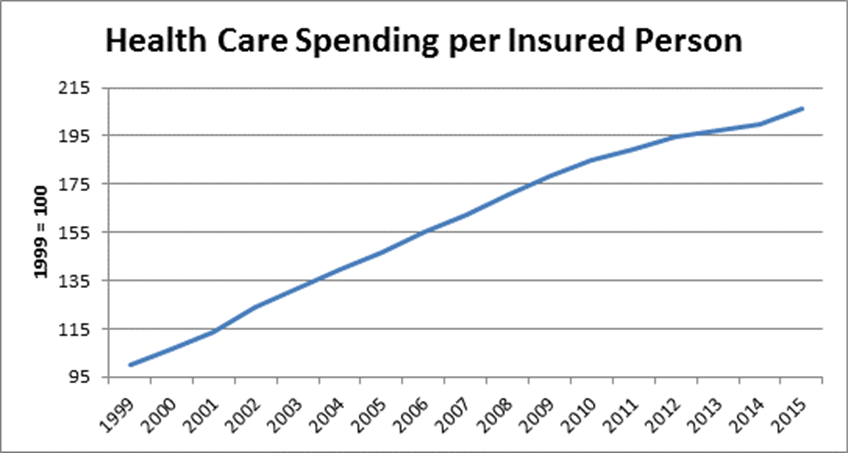October 25, 2016
Just kidding. Actually, insurance costs have slowed sharply in the years since the Affordable Care Act was passed, but it is unlikely many readers of the NYT would know this. Instead, it has focused on the large increase (not levels) in premium costs for the relatively small segment of the population insured on the exchanges. In keeping with this pattern, it gives us a front page piece telling readers about the 25 percent average increase in premiums facing people on the exchange this year. There are two points to keep in mind on this issue.
First, the focus on premiums is exclusively on the relatively small segment of the population getting insurance through the exchanges and specifically through the exchanges managed through the federal government. According to the latest numbers, 12.7 million people are now getting insurance through the exchanges (roughly 4.0 percent of the total population). This article refers to the premiums being paid by the 9.6 million people insured through the federally managed exchange (3.0 percent of the total population). Many states, such as California, have well run exchanges that have been more successful in keeping cost increases down.
There are two reasons that costs on the exchanges have been rising rapidly. The first is that insurers probably priced their policies too low initially. Even with the increases this year premium prices are still lower than had been expected in 2010 when the law was passed. In fact, there has been a sharp slowing in the pace of health care cost growth in the last six years. While not all of this was due to the ACA, it was undoubtedly a factor in this slowdown. In the years from 1999 to 2010, health care costs per insured person rose at an average annual rate of 5.7 percent. In the years from 2010 to 2015 costs per insured person rose at an average rate of just 2.3 percent.

Source: Bureau of Economic Analysis and author’s calculations.
The other reason that premiums on the exchanges have risen rapidly is that more people are stiill getting insurance through employers than had been expected. The people who get insurance through employers tend to be healthier on average than the population as a whole. The Obama administration expected that more employers would stop providing insurance, sending their workers to get insurance on the exchanges. Since they have continued to provide insurance, the mix of people getting insurance through the exchanges is less healthy than had been expected.
Note that this has nothing to do with the “young invincible” story that had been widely touted in the years leading up to the ACA. The problem is not that healthy young people are not signing up. The problem is simply that healthy people of all ages are getting their insurance elsewhere. The overall percentage of the population getting insured is higher than projected, not lower as the young invincible silliness would imply.
Addendum
Robert Salzberg reminds me that the vast majority of people buying insurance in the exchanges get subsidies. For most people these subsidies will fully cover these cost increases. Even after the increases noted in this NYT article, almost 80 percent of the people buying insurance in the exchanges will be able to get a plan for less than $100 per month.







Comments